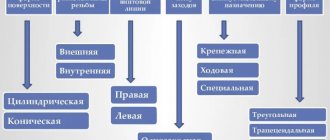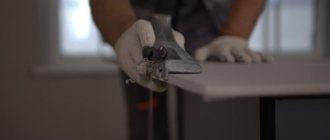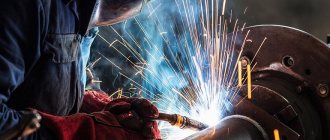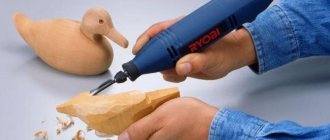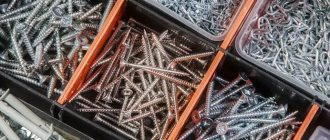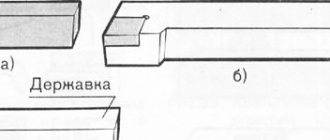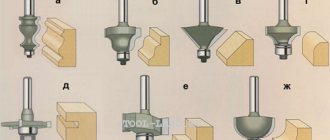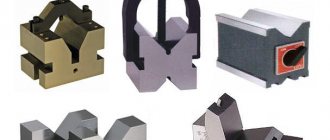Man has been processing wood since ancient times. Wood products became the first household items and enjoyed well-deserved love. Simultaneously with their appearance, wood carving also emerged.
Folk craftsmen skillfully used the specifics of the material, showing its modest beauty and practicality. They gave their products convenient forms with artistic completeness. For the most part, craftsmen tried to combine beautiful decor with practical household and economic purposes.
Wood carving is practically grouped into several types:
- brownie;
- volumetric;
- contour;
- geometric;
- flat-relief;
- embossed;
- carving on gingerbread boards.
The most ancient carpenters used very primitive tools: an axe, a chisel, a planer, a spoon and an adze. The first examples of folk art of wood carving were ducks and wooden horses. Entire sculptural works were also created. A wooden deer made in the 5th-2nd centuries has survived to this day. BC.
In the Middle Ages, carvings had floral ornaments that decorated residential buildings, altars, and icons. Fairytale motifs were often encountered. Since the 16th century, the art of woodworking has taken on three-dimensional forms, tall and picturesque. In a later period, wooden decorations became the basis for the decoration of cathedrals, churches, and rich houses. In the 18th and 19th centuries, almost every house had its own individual character, thanks to skillful wood carvings.
House carving
The main characteristic of home wood carving is its large scale. It is performed using the simplest tools: an ax, a chisel and a saw. Coniferous wood is used.
Wood carving for home decoration was well developed more than five centuries ago. In the north of Russia, the most ancient wooden buildings decorated with carvings have been preserved. There are many wooden carved houses in the Volga region.
Many researchers believe that the art of decorating residential buildings with carvings came from shipbuilding. Often house and ship carvings mean the same thing. House carvings are divided into volumetric, relief and slotted.
Probably the first three-dimensional carvings were on the bows of ships. They included figures of a bird, a horse, and a deer. Relief carvings decorate the gables of houses, windows, and trim. The slotted look appeared in the 19th century. Openwork decorations were cut out with a jigsaw and decorated houses, railings, and entrances to premises.
From the ship to the ball
Solid carving on the gate of Pavlova's house from the mid-19th century in the Museum of Wooden Architecture in Nizhny Novgorod. Photo by I. Bobylkova
Platbands and front plate with blind carvings on the house of the City of Masters complex in Gorodets, Nizhny Novgorod region
Solid carving of a bereginya (mermaid) on a cornice board and a lion on the front board of Pavlova’s house in the mid-19th century in the Museum of Wooden Architecture in Nizhny Novgorod. Photo by I. Bobylkova
Nizhny Novgorod blind carvings have perhaps the most interesting history. It migrated to houses directly from Mother Volga. This type of carving is also called “ship carving”, because it was used to decorate barks – ships on which a lot of goods were transported along the Volga. The barks have long been covered with the most bizarre, most skillful carvings. Researchers believe that this craving for beauty had the most practical justification.
Beginning in the late 1740s, a series of royal decrees prohibited the use of ax-hewn boards anywhere. The forest was then the main resource, it was protected and saved, because under the aspirations of Peter I, the forests around all major cities were mowed down almost to the skin. Carpenters are told to drop their axes and take up their saws. Since “from one log there can be five sawn boards, and at least four or three boards, and one rough board or, if necessary, two.” This could not please shipowners: it was believed that it was the ax board that was most suitable for shipbuilding. A strong blow seemed to seal the wood fibers, and such a board became invulnerable to water. And the sawn boards “wet” and “let in water.” However, because of the wrong building materials, one could end up not only under sanctions, but even under repression: fines, confiscation, whipping.
Volumetric thread
Three-dimensional wood carving is the most complex type of wood processing. It is also called sculptural. This type is characterized by the fact that the produced image seems to be distant from the general background. Forms a relief, sculpture or an entire sculptural group.
Volumetric carving requires real skill from the carver. Mistakes are not forgiven here. Special tools are used for manufacturing.
Homes were decorated with wooden figurines back in Ancient Rus'. They also made toys, animal figurines, and carved whistles. Three-dimensional carving found wide use in churches, where they decorated altars, carved images of saints, and carved crosses.
Volumetric carving also includes root plastic. For it, they take the lower part of the tree, which has a wide variety of shapes, and create original images.
Master class on printed cookie cutters
To make a printed cookie cutter, you first need to cut the blank. The width and length of the blank depends on the size of the future confectionery products. You can focus on generally accepted standards and try on ordinary anniversary or coffee cookies bought in a store. As for the choice of wood, larch, beech, and oak are suitable for these purposes. The workpiece is cut out of the board using a jigsaw. Next, it is fixed on the working surface and a pre-prepared sketch of the image is transferred. All details of the composition on the cookies should be convex, so there is no need to process the background. The set of tools for the job varies depending on its complexity. To make cutting easier, you need to select a source picture drawn with halftones. Then it will be easier for the master to navigate the cutting depth of the elements. For printed cookies, they often choose inscriptions, simple landscapes with trees and birds, animals, flower arrangements, and “bouquets” of ears of corn.
Contour thread
Contour carving refers to ornamental carving. Since the 15th century it has been widely represented in folk art. Contour wood carving is performed in the form of straight lines cut along the contour of the attached drawing.
From a distance, such carvings resemble engraving. It has a clearly defined pattern, quite dry and simple. The composition is often somewhat enlivened by various cuts and coloring.
For such carvings, a special knife and a curved chisel are used. From the outside, the carving appears to be simple, but it is not. It requires great skill, since it is necessary to avoid cuts and chips of wood.
Contour wood carving is most common in the Volga region and northern regions.
Geometric carving
This type of wood carving is the simplest and most accessible to many craftsmen. Geometric threads are special wedge-cutting grooves of different directions and depths. The number of edges in each individual recess can also be different. But the most common ones are with two and three notches.
Triangular carving gives the greatest number of possible patterns. Fewer compositions can be created using tetrahedral carving, and it requires special skill from the carver.
Geometric threads also include staple threads. The design in it is made with a semicircular chisel, first at a right angle, and then at a sharp angle. For geometric wood carvings, linden, aspen, and coniferous wood is used.
Tools for work
Truly high demands are placed on specialized carver tools. The skill of the performer plays an important role. But only with correctly selected and carefully sharpened tools will a master be able to demonstrate his skills in full force.
And if a professional easily and at first glance determines the quality of devices for work, then a beginner is invariably lost and can make a mistake.
First of all, you should purchase:
- quality knives;
- chisels (several pieces);
- needle files;
- hacksaws cutting metal;
- clamping device;
- sandpaper of different grain sizes;
- drill and several types of drills;
- wooden bars.
Knives
It is best to buy knives in a specialized store of goods for creativity and hand-made goods. They must be made from high quality steel. If funds are limited, you can temporarily buy simpler knives, but sharpen them well.
Experts speak positively about tools from the Tatyana, Narex and Kogatana brands.
Chisels
At first, instead of chisels, you can use a sharpened screwdriver and file.
When purchasing chisels, pay attention to the following types:
- Flat - a chisel in the shape of an elongated rod with a cutting edge at the end; it is needed during the initial processing of wood.
- Semicircular is one of the most popular types; it can be of varying degrees of roundness: medium, round or sloping.
- V-shaped - necessary when making geometric threads.
Machine
Carving on a machine has enormous potential, simplifying this work and turning it into pleasure. Modern models are not cheap at all, but professionals characterize them from the best side.
The machines can simplify many labor-intensive operations familiar to carvers:
- surface treatment at different angles;
- drilling recesses, grooves and grooves;
- milling;
- the actual carving.
There are huge differences in the sizes of machine models and in the technology of their operation:
- manual;
- milling and engraving;
- laser;
- CNC machines.
To simplify many operations of artistic carving, professionals advise purchasing a CNC machine. But if a novice craftsman just wants to try himself and see if this hobby is suitable for him, a manual machine is quite enough.
Flat-relief and relief carving
Flat relief carving is also very common. Its distinctive feature is the ornament of the same height. Often compositions are created with a simple design: geometric shapes, plant leaves, images of animals and birds.
Wood carving of this type will require perseverance, rich imagination and a variety of tools from the master: knives, chisels, chasers, scrapers, rasps, etc.
This type of carving is distinguished by subtypes:
- pillow background;
- selected background;
- oval outline.
In relief carving, the design stands out noticeably against the general background. In this form there are practically no flat surfaces. The pattern contains dots of varying heights and shapes. Relief carvings decorate furniture, walls, and make elegant panels.
Relief wood carving is divided into two subtypes: bas-relief and high relief. For carving, choose hard wood: oak, beech, cedar, fir.
Characteristics of types of wood carvings. Thread elements. Terminology
Wood carving, based on its type and technique, is difficult to divide into strict groups that differ from each other and give them an exact name or definition. Therefore, the number of types and subtypes of wood carving in the literature has not yet been established, and the names sometimes have synonyms and sometimes contradictions.
For a woodcarver this does not matter much; he uses one or another type or technique of carving depending on his artistic intent.
Our task here is to introduce the amateur carver to the most common names of types of carving and their characteristics.
Most often, carvings are divided into five or six types: flat-notched, flat-relief, relief, slotted, sculpted, combined.
1. Flat grooved carving, by its name, comes from two characteristics: the plane and the recesses made on it.
Its main feature is contours in the form of recesses that outline the figures of the image, or other clearly defined recesses on the surface. It is divided into two subtypes: geometric and contour.
Geometric carving . The figures depicted in it have a geometric shape and are made, as a rule, in the form of rectilinear and arcuate elements.
Geometric also includes carving, where the sign of contour may be absent, but the elements of the carving are clearly geometric in nature: cubes, crosses, diamonds in the form of recesses, marigolds, triangles, etc. (Fig. 138).
| Rice. 138. Elements of geometric carving |
Elements of geometric thread (according to Fig. 138).
1. Triangles - triangular indentations. First, a through line is cut through all the bases of the triangles with the cutter tilted, then side cuts are made.
2. Triangles with teeth . The midline of the clove (the prick line) bisects the angle between the base of the triangle and the side.
3. Diamonds . Two rows of triangles with closed vertices.
4. Chain . Two rows of triangles with closed bases.
5. Viteika . Small triangles in two rows, as in rhombuses, but with one row shifted by half a step.
6. Snake . Two rows of triangles, as in a twist, but one row is pushed into the other.
7. Herringbone . Two rows of triangles of different sizes.
8. Herringbone . A number of small triangles in step 7 are replaced with marigolds - semicircular cutouts.
9. Easter cakes . The contours of the diamonds are grooves; Easter cakes are paired triangles (beads) of lobar and transverse arrangement.
10. Pegs . A combination of triangles inscribed in rows into a large triangle or rhombus. First, the through lines of the contour are cut with the cutter tilted, and then the lines parallel to them.
11. Straight scale . First, through lines of the mesh are cut without tilting the cutter, then cuts are made on the sides of each flake.
12. Eyes . With an inclination on both sides of the center line, through cuts are made with a cutter, forming the edges of the protruding edge of the eyes. Then the cuts are made with a semicircular chisel.
13. Flashlights . The grooves of the mesh are cut, then the single eyes of the lobar and transverse directions are cut. Slotted transverse grooves of rays extend from the eyes.
14. The ladder is flat . Triangles connected by slotted lines across the tape.
The ladder is simple . First, all cuts are made on one side.
Edged ladder . The tape is cut on both sides and a deep line is cut on top. The ladder is cut, then it is trimmed from below.
15. Straight ladder with teeth . First, the cloves are split, after which the ladder is cut.
Sloping ladder with teeth. Forms the appearance of a two-lead helical line.
16. Bushes . Half eyes in combination with beads (paired triangles).
17. Honeycombs . A combination of rows of recesses in the form of a quadrangular pyramid with the top down. First, through lines are cut parallel to the sides of the diamond with the cutter inclined at 50°. Then each diamond is cut out separately using the toe of a cutter or knife.
18. Cubes . Intersecting stairs. The sides of the rhombus are cut with a cutter, with an inclination of 30°, then, with an inclination of 50°, deeper grooves of the first and second rows are cut, alternating with the heel or toe forward.
19. Shine with teeth.
20. Edged radiance (along the contour).
Contour carving includes types of carving where the contour outline of the depicted figures with a line-notch is clearly expressed (Fig. 139). Most often these are figurative motifs: animalistic (animal figures) and floral, but there can also be motifs of geometric shapes (sometimes there is no sharp difference between geometric and contour carvings). This also includes contour carving in the form of thin, often very patterned lines, called engraving (see Fig. 141).
Due to its clarity and rigidity of contours, flat grooved carving is used for decorating dimly lit places. In some cases, geometric carving, when identical elements are repeated many times, has an interesting play of edges and creates a lace pattern.
| Rice. 141. Fragments of a sculpture of a young man. A type of carving with a selected background: a - a small, clear carving pattern is made with a contour line and is reinforced by a very shallow sampling and chasing of the background (the ornament on the chest of the sculpture); b - the carving pattern is revealed by shallow selection and embossing of the background, the rosette is decorated with thin engraving grooves (stand for the sculpture) |
| Rice. 139. Contour carving: a - doors, b - frieze on the cornice of furniture (the background is tinted) |
2. Flat-relief carving . It got its name because the figures in the image, while remaining mostly flat, are not only outlined with a notch along the contour, but also processed along the edges, which creates the illusion of relief. It is a development of contour carving.
The subtypes of this carving are as follows.
| Rice. 140. Flat-relief carving on a craft in a cross section: a - contour; b - with oval contours; c - oval with a cushion background; g - oval with a selected background; d - relief-oval thread |
a) Thread with oval contours (sometimes it is called thread with oval contours from the words “fill up”, “round”). On the side of the ornament the contour line (groove) is rounded more steeply, and on the side of the background it is more hollow. This gives an interesting play of light and shadow (Fig. 140, b).
b) Oval carving with a cushion background is the same as oval carving, but its background never remains flat, sometimes it is slightly lower than the level of the plane of the ornament.
c) Oval carving with a selected background . The contours of the ornament of such carvings are ovalized, and the background is selected (recessed) to the plane so that the ornament seems superimposed on the plane.
Sometimes the background is embossed for contrast (see Fig. 140, d and 141).
d) Relief-oval thread . The background of the carving is oval, but the ornament is not flat, but processed in relief (see Fig. 140).
3. Relief carving . Relief is a carving where the image is convex in relation to the background and is completely artistically processed within the depth of the background. A relief is called concave if the image is recessed in relation to the background. Relief carving is divided into bas-relief and high relief.
a) Bas is a low relief in which the convex image protrudes above the background surface by no more than half its volume (see Fig. 1, 35).
| Rice. 1. Bas-relief of a bunch of grapes (mahogany, beech). One of the possible first crafts for a beginning carver | Rice. 35. Bas-relief with Venus (mahogany, gilded bronze) |
b) relief - high relief in which the convex image protrudes above the background surface by more than half of its volume (Fig. 142).
| Rice. 142. Examples of high relief carvings | |
4. Slotted carving is a carving on a layer of wood of any shape, where the elements of the image are interconnected and surrounded by slits instead of a background. Depending on the shape and surface treatment, through threads can be represented as flat-relief or relief, where the background is removed.
Relief slotted carving is usually called openwork, especially if it is skillfully and delicately made, like lace (“openwork” translated from French means “through”) (see Fig. 86).
| Rice. 86. Composition for openwork carving | Rice. 13. Column for a sculpted bust |
| Rice. 88. Overlay openwork ornament | |
| Rice. 38. “Bacchante” – bust for a column (eucalyptus) |
If a slotted thread is glued or mounted in some other way on the surface of the base (product), it is called an overlay or sticker (see Fig. 88 and 13.
5. Sculptural carving is a three-dimensional figure artistically processed on all sides, completely or mostly separated from the background (see Fig. 38).
6. Combined thread (Fig. 143) is a thread that includes parts or elements of the main types of thread described above, as well as other forms, including those listed below (see also Fig. 13, 21, 24). The carver works mainly in the technique of combined carving.
To the listed types of carving we will add some more concepts and names found in the practice of carving.
| Rice. 143. Combined carving: a - bas-relief and flat-relief carving with a selected background, with chasing and engraving on the chest of the sculpture of a young man; b— a combination of bas-relief carvings with engraving and decoration, as well as with flat-relief carvings on the back of the chair | |
| Rice. 21. Fish and octopus - sculptural composition (eucalyptus). Fragments of the composition | ||
| Rice. 24. Table on a twisted stand. Carving, intarsia (toned pine, acaju, lemon and other woods). Fragments of the table | ||
House carving is used to decorate wooden buildings. Large forms and viewing such carvings from a distance justify the use of an axe, saw, chisels, chisels, drills, as well as overlays made of slats, planks, etc. as a tool for its execution. The design can be slotted, relief, three-dimensional (Fig. 144).
| Rice. 144. Ornaments of house carvings: on top - blind house carvings, on the bottom - applied carvings made of slats (lattice) and boards made according to the profile (cross section shown) | |
Vitier is an alternation of helical protrusions and depressions cut out on the surface of rotation of a part: cylindrical, conical, spherical, domed. Twisting can be done with one thread, two, three or more threads (see the column in Fig. 13, as well as Fig. 195 and 196).
| Rice. 195. Constructing a left helical line on the bulbous head by 1/4 turn (construction of the other two lines is not shown) | Rice. 196. Constructing a left helix on the bulbous head by 1/6 of a turn |
Curvier - curved, curved parts, processed on all sides: furniture legs, supports, sconces, consoles, etc.
Profile work - crafts cut along the contour, either only on the outside, or both outside and inside: walls and brackets of shelves, backs of spinning wheels, etc. (Fig. 145).
Blind carving is a relief house carving, made not in the form of an applied slotted thread, but on solid material (see Fig. 144) (by type: the hole is not through, but blind).
Now let's get acquainted with some terms that are found both in the practice of wood carving and in specialized literature.
Acanthus is a herbaceous plant with curly leaves. In a stylized form, acanthus was used for decoration in architecture and wood carving at all times and in various styles (see Fig. 103).
| Rice. 145. The back of the chair. Profile and contour thread | Rice. 103. Acanthus leaf in wood carving. A variety of acanthus leaf in nature. Frame detail | |
Cupid: 1) the ancient Roman god of love (corresponding to the Greek Eros), depicted as a winged boy with a bow and arrows; 2) angel; 3) the image of a naked child in art (Fig. 146).
Architectonics: 1) construction art; 2) artistic expression of the laws of the structure or connection of parts of an object (Fig. 147, 148), for example, the connection of wooden parts with screws and nails will be non-tectonic, and on spikes or axles - tectonic.
Atlas (analogy: see Caryatid):
1) in Greek mythology, the titan Atlas, supporting the firmament;
2) a male statue as a column in furniture or buildings.
Baluster is an element of a balustrade (fencing of stairs, terraces, balconies) in the form of a carved column (Fig. 149).
| Rice. 146. Sculpture of a child. Model angle, stand and hair carving options. The compactness and simplified form of the sculpture makes it easier to perform in wood | Rice. 147. A fundamental example of a tectonically correct (a) choice of the direction of wood fibers in the manufacture or veneering of elongated objects and a tectonically incorrect (b) solution |
| Rice. 148. Examples of tectonic connections and cladding of parts in carvings: less successful (1) and more successful (2) field extension due to veneer lining. Separate gluing of plywood (3) is justified when they are taken from one pack (knol). Connection of veneer strips (4) through contrasting veins. Correct (5) and incorrect (6) selection of wood when inserting plugs or patches in place of knots. Covering rounded corners with plywood (7). Facing right angles and cylindrical surfaces (8) | |
| Rice. 149. Examples of carved and turned balusters | |
Beads: 1) edging, a thin strip of balls and oblong elements (Fig. 150);
2) a set of identical elements in a carved strip of geometric carving (see Fig. 138).
A wreath is a round or rectilinear floral ornament, sometimes entwined with a ribbon, including fruits and other elements (Fig. 151).
| Rice. 150. Examples of beads in carvings | |
| Rice. 138. Elements of geometric carving | Rice. 151. Wreath. Examples of execution in thread |
| Rice. 152. Geridon - a round table on a central leg. Examples |
Screw: line, surface, thread - see p. 223.
Expressive arts - see Plastic arts.
Fillet (from German “notch”, “groove”): 1) rounding of internal or external corners; 2) profile in the form of a groove - see Profile; 3) a carpenter's figured plane for planing the fillet profile.
Geridon is a table on one leg (Fig. 152).
Herma is a quadrangular column ending with a sculpture of a head, originally the head of Hermes.
The griffin is a fantastic animal: a winged lion with the head of an eagle (sometimes a lion), the ears of a horse and the dorsal fin of a fish. In decorative art it is found in modifications.
Grotesque is an ornament in which decorative and figurative motifs (plants, animals, masks, human forms) are presented in a bizarre form (Fig. 153, 154).
Jib - a profile consisting of a concave and curved arc (see Fig. 161).
| Rice. 153. Grotesque in flat-relief carving: on the right - a drawing based on Roman ornament, on the left - house carving | Rice. 154. “Gossip Girls” - grotesque, subject for marquetry, flat-relief or bas-relief carving |
| Rice. 161. Profiles of edging slats, cornices, smooth baguette edgings and other linearly elongated frames: 1 - half-roller; 2 - quarter roller; 3 — reverse half-roller (groove); 4 — shelves; 5 — fillet; b - jib; 7 - heel | |
Dolphin is a stylized image of a fish in an ornament, frieze, etc. (Fig. 155).
A dragon is a fantastic image of a winged, sometimes multi-headed, fire-breathing serpent (Fig. 156).
Fine arts - see Plastic arts.
Cabriole - curved furniture legs.
Kalevka: 1) figured profile; 2) a figured plane to obtain molding.
Cameo (Fig. 157 and Fig. 36 inserts) is a small oval or round image with a convex relief, usually made of stone (with a concave relief - intaglio, cameos and intaglios are called gems).
| Rice. 155. Examples of a stylized image of a dolphin in applied art | Rice. 156. Examples of a stylized image of a dragon: a - image of a dragon in the Renaissance; (b, c - dragons in the park of Petrodvorets; d - one of the paired dragons above the door of the hall in the large palace of Petrodvorets |
| Rice. 157. Cameo (enlarged). Ivory, mother of pearl, gilded bronze | |
| Rice. 36. Bas-relief with cameos | |
Flutes are vertical grooves on a column or pilaster, adjacent to each other.
The capital of a column is the upper protruding part of a column.
Caryatid (analogy: see Atlas) is a column in the shape of a female statue.
Cornice is a horizontal protruding strip, often figured or carved, protecting the top of a wall or window from rain, or a strip dividing the wall into proportions. In furniture, the cornice is made at the border of the lid and the side walls (Fig. 158).
Kima (rolling wave) is a decoration in the form of a border on a cornice.
Console - a ledge in the wall; a bracket that serves as a support and also for placing decorations on it. A table adjacent to the wall (Fig. 41 inset).
Crabb (Gothic) - a detail in the form of stylized leaves or flowers forming a jagged vertical or inclined frieze (Fig. 159).
| Rice. 158. Carving of the cornice and jib of the octagonal plinth on the stand for the sculpture of a young man. | Rice. 41. Seahorse - console for shelf (mahogany) | Rice. 159. Examples of a carved stepped frieze called a crabb |
Dome.
Bulbous head - also see p. 221.
Masverk.
| Rice. 160. Meander: rectangular, oblique (with an angle of inclination of 60°) and curvilinear, based on the Archimedes spiral. In a curvilinear meander, the distance between the centers of the construction circles (rapport) is dictated by point K, located on the perpendicular to 0-14 |
Mask: 1) in drawing and painting - a person’s face; 2) in architecture and carving - a stylized or grotesque human face or head.
Mascaron is a mask, a decorative relief in the form of a person’s face.
Meander is a geometric pattern that looks like a continuous curved broken line. Received its name from a winding river in Asia Minor (currently the B. Menderes River in Turkey) (Fig. 160).
Medallion: 1) an image in a round or oval frame; 2) a round or oval jewelry box for storing a portrait or relic.
Files - are divided according to the number of notches per 1 cm:
garnish (4.5-12), personal (13-26), velvet and needle files (42-80).
Non-visual arts - see Plastic arts.
Patina: 1) a film on the surface of a product formed under the influence of atmosphere and time or special treatment; 2) a coating on the surface of a work of art, indicating its noble antiquity.
A pilaster is a flat vertical projection of a wall.
Plastic art: 1) the same as sculpture; 2) modeling a sculpture from a plastic material.
Plastic arts are types of art perceived by vision, also called spatial arts . They are divided into fine arts (painting, sculpture, graphics, photography), which reproduce the real world, and non-fine or expressive arts (architecture, decorative and applied arts, artistic design).
There is no sharp difference between these parts of plastic art.
An area such as an ornament or poster uses both figurative and non-figurative motifs. In painting and drawing there are also elements of non-fine art. Wood carving, marquetry, intarsia, related to plastic art, can be adjacent to either one or the other of its branches, depending on the nature of the image and the included motifs.
Plasticity - expressiveness of a three-dimensional form; harmony, grace.
Profile: 1) side view of a person or object; 2) the same as the silhouette, for example, the profile of a window, niche; 3) cross-section of a long part such as slats, beams, cornices, etc. (Fig. 161).
| Rice. 161. Profiles of edging slats, cornices, smooth baguette edgings and other linearly elongated frames: 1 - half-roller; 2 - quarter roller; 3 — reverse half-roller (groove); 4 — shelves; 5 — fillet; b - jib; 7 - heel |
Decoration is the application of additional decorations to the carving, usually flat-relief, in the form of engraving, grooves, mesh, etc. Decoration is always done more finely than the contour lines (see Fig. 141 and 143).
The strap is a ribbon ornament in the form of a narrow strip (see Fig. 17).
| Rice. 17. Carved strap - frame detail | Rice. 162. Cornucopia in wood carving |
| Rice. 225. Stacks (a), rings and loops (b) for working with clay and plasticine | |
Horn of plenty: 1) in Greek mythology, the horn of the goat Amalthea, who fed Zeus with her milk; had the magical property of giving whatever its owner desired; 2) a source of abundance, wealth; 3) a decorative element of all styles, starting with the ancient Romans (Fig. 162).
Siren: 1) in Greek mythology, half-bird, half-woman; sirens lured sailors with their singing and killed them.
Easel art is a type of fine arts, the works of which are independent in nature and do not have a direct decorative or utilitarian purpose (in painting - paintings, in sculpture - statues, busts, groups, easel reliefs, in graphics - prints, easel drawings). The name comes from the machine on which works of art are created: easel, sculpture machine.
Stack - see fig. 225.
A stela is a vertically standing stone slab with an inscription or image.
Stylization: 1) free, with free interpretation, imitation of any style; 2) a generalized image of real objects, for example, for the purpose of obtaining patterns (in ornaments) or readable symbols (in posters).
Style is the general features of an artistic solution, as well as a creative approach in a separate work of art, or in the works of an individual author, or entire eras, artistic movements, etc.
Miter box - see fig. 104.
The texture of wood is the natural pattern of the wood species, determined by its anatomical structure.
Tectonic construction - see Architectonics.
Us. Miter connection is a connection of two slats of a frame or frame at right angles with cutting off each end of them at an angle of 45° (Fig. 163 and 164).
| Rice. 104. Miter box for sawing slats at right angles and at an angle of 45° | |
| Rice. 163. Knitting frame bars on the mustache | Rice. 164. Knitting frame bars on the miter side |
A rebate is a rectangular cut on the back side of a frame, frame, or panel board. A square notch half the thickness of the board is called a quarter (usually used to connect boards to each other: bonding, flooring).
Festoon is a sagging garland of leaves, flowers, and fruits.
Vial, vial - the tip of a column, vessel, stand in the shape of a pointed turret (Fig. 165 and 166).
Panel: 1) a thin board or plywood inserted into the groove of a door frame, the back of a chair, etc.; 2) part of a door, pilaster, or any field, surrounded by a frame or recessed. The panels are sometimes carved (Fig. 167).
| Rice. 165. The crowning part of a carved product (phial) | |
| Rice. 166. Lid handle in the form of three dolphins intertwined with their tails (complex phial shape) | Rice. 167. An example of a carved panel that can be used as a frame |
Frieze is an ornamental strip running along the edge of furniture or a wall.
Accessories - auxiliary, auxiliary materials. In wood carving, the accessories may include: applied metal decorative elements, hinges and linings for door keyholes, keys, album cover fasteners, etc. (Fig. 168). The style and character of the fittings are linked into the composition with carvings.
Chimera: 1) in Greek mythology, a monster with the head and neck of a lion, the body of a goat and the tail of a dragon; the creation of the hundred-headed fire-breathing monster Typhon and the half-woman, half-snake Echidna; 2) a fantastic monster.
Caesura - omission, interval, emptiness.
Plinth is the lower, protruding supporting part of a building or a massive support that replaces legs in furniture (it can also be recessed).
| Rice. 168. Fittings as decoration for carved items and as auxiliary parts: 1 - door on the back side of the miniature frame; 2— hinges made of a strip of bronze foil (pressed in when gluing two veneer door blanks with wood glue); 3 - loop for suspension - bronze wire; 4 - constipation - a part made of a bronze plate. 5 - hinged loop along the entire length of the box lid; material: bronze foil, knitting needle. Manufacturing: bending a strip of foil in half around the spoke-axis, cutting the grooves on one half of the loop with a file in a vice, marking the grooves of the second half and cutting them, assembling with the axle and crimping, drilling holes, grinding and polishing; 6 - eyelet for hanging a picture with an expanded hole for the passage of the nail head and a slot for locking it; the ear can be rotated relative to the screw securing it to be able to find the center of gravity of the painting; 7 — wire bracket with hook hanger; there is freedom to maneuver left and right in search of a suspension point; 8 - hole for hanging in the product itself, selected with a cutter; the inclination of the hole fixes the nail head, the length in the horizontal direction allows you to correctly find the suspension point; 9 — eye with a through groove for putting on a nail with a head; 10 - suspension on one nail of an inclined frame: the length of the upper cord regulates the angle of inclination of the frame |
How do you like the craft?

